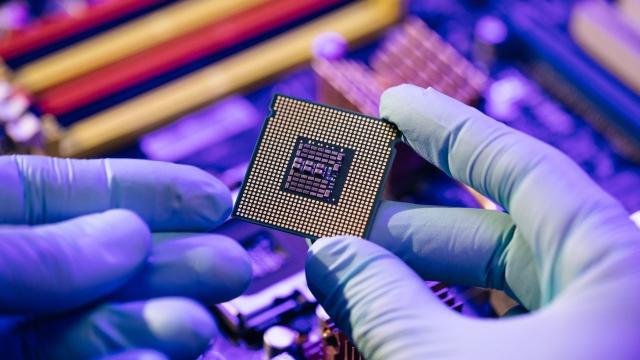Australia has been missing out on the trillion-dollar semiconductor industry, according to an expert from Main Sequence.
Semiconductors are in everything, from electric cars to gaming computers, smart kettles to satellites. They’re essential in modern computers and microcomputing, to the point where most things that have a power cable will have a semiconductor.
And the semiconductor industry is only going to get bigger with more devices incorporating more semiconductors. But, it’s still being choked by the COVID-19 pandemic.
Many of the factories tasked with the manufacturing of chips were forced to shut down to prevent the spread of COVID. This wasn’t at all helped by demand from consumers. During the height of the pandemic, people rushed to buy electronics for working from home, including monitors, computers, keyboards, mice and cameras. Plus, tech to play with to pass the time during stay at home orders. A lot of this tech, of course, needs semiconductors. Demand has returned to more standard levels, and, well, the supply chain is still in a bit of a mess. And this is affecting everything that involves a semiconductor (this is part of why Teslas are so hard to get right now in Australia and why you might still be waiting for a PS5).
Making matters worse: semiconductors are freaking hard to make. Like, super hard, with not many fabrication facilities located around the world and demand from designers and fabricators congesting supply. These fabricators typically take three to six months to produce a “wafer” of chips.
If you’re curious, Australia only has two semiconductor fabricators in NSW, owned by Silanna, which support proprietary projects.
This is going to need to change if Australia is going to benefit from the industry in any way, according to Mike Nicholls, a partner at Main Sequence, a venture capital organisation interested in innovative tech startups. Main Sequence is Australia’s deep tech investment fund, founded by the CSIRO.
“It’s estimated to be a trillion-dollar industry sometime in the next four to five years,” Nicholls told Gizmodo Australia.
“My understanding is, at the moment, is that there’s over $500 billion per annum across the whole semiconductor space, and frankly, Australia’s got probably less than $100 million of that.”
Right now, the semiconductor supply chain is a bit intricate. We already discussed the fabricators: those are the facilities where the chips are wafered and produced en masse. This leads to testing, and then on to packaging. The semiconductors are then sent onto the facilities that order them.
What precedes these steps is the design aspect, which is where Nicholls says Australia could benefit.
“The design aspect of semiconductors is about 40 per cent of the value chain,” Nicholls added.
“The value for us is, in my mind, in designing and creating and capturing most of the value chain and selling those products with the manufacturing largely happening in the large stacks.”
In Nicholls’ mind, Australian semiconductor businesses could design the chips, which are then sent off to fabricators elsewhere. While fabricators are essential to semiconductor manufacturing, he told me that fabricators are something to focus on down the line, perhaps in five to 10 years.
Nicholls explained that Australia could be instrumental in replacing the STM32, the semiconductor that he describes as “powering the world”. He told me that there’s a real chance that Australia could crack this industry and really make a name for itself in the global economy of semiconductors.
Australia has been slow to back the semiconductor industry. While the U.S. is weighing up the $US52 billion CHIPS act, and Europe is investing €42 billion in private and public funds into the semiconductor industry, government backing down under has been lacking. Actually, the most ambitious plan was announced just this week in NSW, seeking to back startups as a funding middleman.
And yet, we have a history with emerging tech, from solar panels to Wi-Fi. The capability exists here, as does the workforce: it just needs the energy.
Ultimately, it’s just something we’re going to need to do at some point. Semiconductors aren’t an emerging tech — they’re an essential tech. And we need to get the ball rolling.
“Singapore is a fairly small country, fairly small area, but they have 50 or so semiconductor companies and they’ve got a couple of fabricators,” Nicholls added.
“They’re punching above their weight in the space. The question is how does Australia get to that.”
We interviewed Nicholls before the announcement of the NSW semiconductor funding initiative, and we’ve reached out for comment since.
